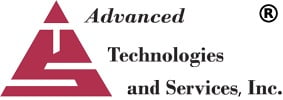For the last fifty years of my telecom experience, a person’s telephone number had geographical significance that was critical to proper rating and classification of calls placed from a telephone number.
The telephone number could easily be translated to a/an:
- Exchange Name
- Exchange Carrier
- Rate Center having specific Vertical and Horizontal coordinates that identified the exact physical location within the North American Numbering Plan Area
- LATA Code
- State Code
This type of structure historically promoted distance-sensitive rating structures for individual calls that carried labels like Local, intrastate toll and interstate toll. The structure often dictated things like when you were billed for telephone usage during a month.
Overall, this structure created an iron-clad certainty about your telephone number that promoted an entire framework for billing and operations support systems.
During the last thirty (30) years, we have experienced the implementation of Equal Access that was brought about by the AT&T Divestiture where there was no longer a monolithic Bell System with a single Interexchange Carrier providing call transport and completion services on an interstate and international basis resulting in a division of toll revenues managed by AT&T Long Lines.
The Modification of Final Judgment (MFJ) agreed to by the US Justice Department and AT&T and the twenty-three (23) Bell Operating Companies (BOCs) carved up the United States into two-hundred forty-five (245) separate geographical areas called Local Access and Transport Areas (LATAs).
Local Exchange Carriers were bound to providing service within these new Local Access and Transport Areas (LATAs); The Local Exchange Carriers (LECs) were prohibited from transporting and completing call traffic beyond LATA boundaries. InterLATA call traffic was reserved to only a growing list of new Interexchange Carriers IXCs) what provided these services.
Customers were given equal access to the Interexchange Carrier (IXC) of their choice and Local Exchange Carriers (LECs) handed off interLATA traffic to the new carriers.
Behind the scenes, Local Exchange Carriers (LECs) billed access charges to IXCs for interLATA calls originated by or terminated to their local exchange customers.
Only IXCs were permitted to carry and bill end-users for interLATA traffic.
Although this change in billing arrangements was massive in its scope, the telecom industry over a period of a few years actually managed to digest the many alphabetic acronyms that came with Divestiture.
Initially, the twenty plus very large Local Exchange Carriers became known as Regional Bell Operating Companies (RBOCs) that made up the old Bell System and the thousand-plus much smaller independent local exchange carriers all classified as ILECs operated effectively in carving up the Local Exchange pie.
Then about twenty (20) years ago a new form of competition evolved in the form of Competitive Local Exchange Carriers (CLECs) and the RBOCs and ILECs suddenly found themselves in a competitive local exchange market. This caused a further reduction in the size of the telecom revenue pie that was the Local Exchange market.
Soon afterward, the burgeoning wireless cell phone industry made its presence felt in the intraLATA market and beyond with the wireless sector’s fifty-one (51) Major Trading Areas (MTAs) that spanned LATA boundaries in many cases.
Even with all of this change, an individual telephone user’s telephone number still had geographical significance. And much of the telecom billing and operations support built upon the structure had relevance.
Now this is being threatened as newer technology revolving around Voice Over Internet Protocol (VoIP) makes the old world telecom structure appear to be a dinosaur in the making.
The concepts of National Number Portability (NNP) and Non-Geographic Local Routing Numbers (NGLRNs) that are being pursued by the FCC in its Notice of Proposed Rulemaking and Notice of Inquiry (FCC 17-133) dated October 24. 2017 that is composed of Nationwide Number Portability (WC Docket No. 17-244) and Numbering Policies for Modern Communications (WC Docket No. 13-97) seeks public feedback
A new telecom network structure built around Portability Outside the Rate Center (PORC) and the division of the North American Numbering Plan Areas (NANPAs) into small, non-overlapping geographic blocks called Geographic Unit Building Blocks (GUBBs) may become a reality.
The thrust of what this all means to everyone that is interested and how we can cope with the turmoil that a new telecom structure will certainly generate will be the focus of my future blog articles.

